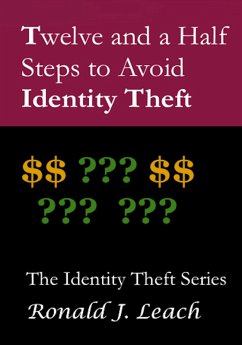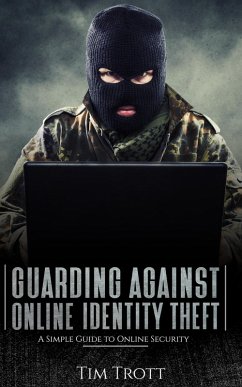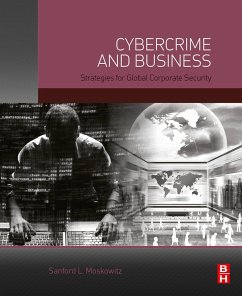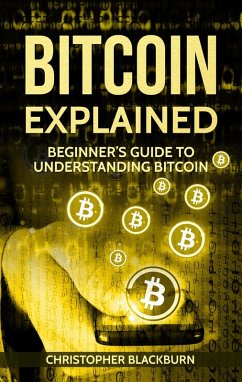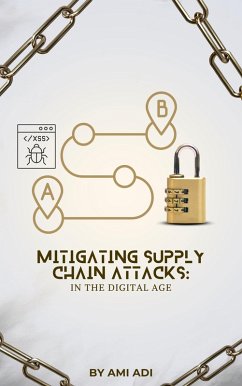
Identity Theft in the Cyber Age (eBook, ePUB)

PAYBACK Punkte
0 °P sammeln!
Do you know how to protect your vital information when using computers for banking, credit cards, and everyday purchases? What about when you are using email, web surfing, texting, or social networking? This easy-to-understand, guide, intended for the general, non-specialist reader, is based on the author's experiences as a long-term identity theft lecturer and computer scientist. It will help you identify the tell-tale signs of insecure transmission of your data, the most common security weaknesses of software, and the dangerous practice of "Pameiob."Identity Theft in the Cyber Age, intended ...
Do you know how to protect your vital information when using computers for banking, credit cards, and everyday purchases? What about when you are using email, web surfing, texting, or social networking? This easy-to-understand, guide, intended for the general, non-specialist reader, is based on the author's experiences as a long-term identity theft lecturer and computer scientist. It will help you identify the tell-tale signs of insecure transmission of your data, the most common security weaknesses of software, and the dangerous practice of "Pameiob."
Identity Theft in the Cyber Age, intended for the general, non-specialist reader, will tell you what to do and what to avoid when preparing your taxes; going to a bank, pharmacy, or doctor; shopping in person; traveling; or using any kind of electronic commerce. You'll learn about the most common security weaknesses of modern banking and e-commerce software and when to avoid using certain software systems, the tell-tale signs of potentially insecure transmission of your data, and how to avoid the dangerous practice of "Pameiob." You'll learn how you have to protect yourself from the kinds of identity theft that can occur even if you NEVER do any online shopping.
Identity Theft in the Cyber Age is a comprehensive, easy-to-understand guide that is dedicated to keeping your assets and identity safe while navigating this dangerous world. Much of the book is based on the author's extensive experience as a Computer Scientist, lecturer, and consultant in various aspects of software engineering, computer security, and identity theft. Major topics in this complex subject are illustrated by case studies describing the personal experiences of some of the author's friends and acquaintances, and by experiences of some prominent public figures. You'll learn about the potential profit margins that make cybercrime so appealing to criminals - and why such crime is so hard to prosecute.
In this book you will learn just how pervasive the crime of identity theft is, and how you are at risk even if you don't do any online banking or make any online purchases using a credit card. We'll discuss some simple strategies that can help you cope with the side effects of the increase in digital information that is already available to potential identity thieves.
There are four main chapters. Chapter 1 is entitled "Identity Theft: How Bad Is It?" and provides an overview of this all too common problem.
Chapter two, entitled "Identity Theft: How Vulnerable are You?," provides examples of actual cases of the most common types of identity heft that occur today.
The third chapter is entitled "Protect Yourself From Identity Theft" and contains a set of strategies that can be used to greatly reduce the chances of you suffering identity theft.
The fourth chapter is entitled "What To Do If You Are An Identity Victim." It provides a set of overall strategies and specific actions you should take if you are the victim of identity theft.
There are three appendices. The first appendix contains contact information for the Federal Trade Commission, the three major credit reporting agencies, many US banks, many consumer protection organizations, and a few of the more established companies that specialize in identity theft protection and recovery. The second appendix contains a checklist for protecting yourself from identity theft. Appendix three also contains a checklist; this one is used to aid you in recovering from identity theft if you are a victim.
Identity Theft in the Cyber Age, intended for the general, non-specialist reader, will tell you what to do and what to avoid when preparing your taxes; going to a bank, pharmacy, or doctor; shopping in person; traveling; or using any kind of electronic commerce. You'll learn about the most common security weaknesses of modern banking and e-commerce software and when to avoid using certain software systems, the tell-tale signs of potentially insecure transmission of your data, and how to avoid the dangerous practice of "Pameiob." You'll learn how you have to protect yourself from the kinds of identity theft that can occur even if you NEVER do any online shopping.
Identity Theft in the Cyber Age is a comprehensive, easy-to-understand guide that is dedicated to keeping your assets and identity safe while navigating this dangerous world. Much of the book is based on the author's extensive experience as a Computer Scientist, lecturer, and consultant in various aspects of software engineering, computer security, and identity theft. Major topics in this complex subject are illustrated by case studies describing the personal experiences of some of the author's friends and acquaintances, and by experiences of some prominent public figures. You'll learn about the potential profit margins that make cybercrime so appealing to criminals - and why such crime is so hard to prosecute.
In this book you will learn just how pervasive the crime of identity theft is, and how you are at risk even if you don't do any online banking or make any online purchases using a credit card. We'll discuss some simple strategies that can help you cope with the side effects of the increase in digital information that is already available to potential identity thieves.
There are four main chapters. Chapter 1 is entitled "Identity Theft: How Bad Is It?" and provides an overview of this all too common problem.
Chapter two, entitled "Identity Theft: How Vulnerable are You?," provides examples of actual cases of the most common types of identity heft that occur today.
The third chapter is entitled "Protect Yourself From Identity Theft" and contains a set of strategies that can be used to greatly reduce the chances of you suffering identity theft.
The fourth chapter is entitled "What To Do If You Are An Identity Victim." It provides a set of overall strategies and specific actions you should take if you are the victim of identity theft.
There are three appendices. The first appendix contains contact information for the Federal Trade Commission, the three major credit reporting agencies, many US banks, many consumer protection organizations, and a few of the more established companies that specialize in identity theft protection and recovery. The second appendix contains a checklist for protecting yourself from identity theft. Appendix three also contains a checklist; this one is used to aid you in recovering from identity theft if you are a victim.
Dieser Download kann aus rechtlichen Gründen nur mit Rechnungsadresse in A, B, CY, CZ, D, DK, EW, E, FIN, F, GR, H, IRL, I, LT, L, LR, M, NL, PL, P, R, S, SLO, SK ausgeliefert werden.




